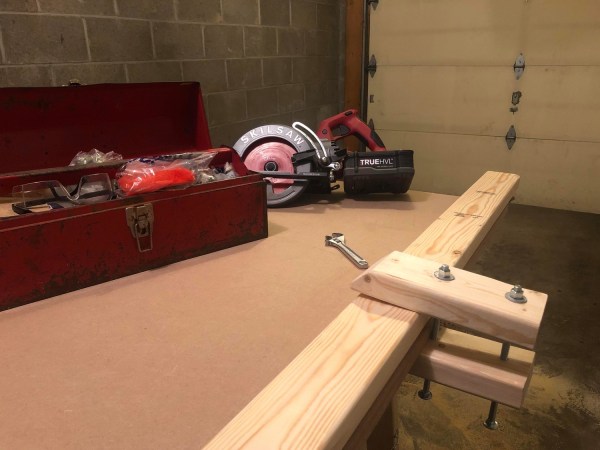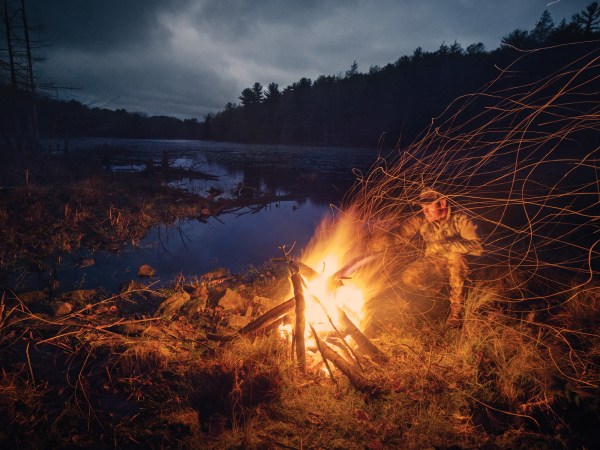

If your house is anything like mine, there are jackets and sweatshirts piled in halls, corners and anywhere else the kids drop them. We tried to solve this problem by hanging adhesive hooks at kid-height near the front door so jackets had a home. But these stick-on hangers were no match for 6-year-olds—half had fallen within a couple of months.
As a more durable solution, I made wooden coat racks that could be mounted to the wall. A coat rack, in its most basic form, is an easy project that anyone can do: buy some coat hooks, screw them to a board, and then put that board on a wall. But if you want something a bit fancier, there are ways to step it up a notch without adding much difficulty.
Warning: DIY projects can be dangerous, even for the most experienced makers. Before proceeding with this or any other project on our site, ensure you have all necessary safety gear and know how to use it properly. At minimum, that may include safety glasses, a face mask, and/or ear protection. If you’re using power tools, you must know how to use them safely and correctly. If you do not, or are otherwise uncomfortable with anything described here, don’t attempt this project.
Stats
- Time to complete: 2 to 3 hours
- Material cost: $20 to $50
- Difficulty: Easy, with moderate upgrades
Materials
Tools
- Circular saw
- Speed square
- Measuring tape
- Power drill
- Countersink bit
- Orbital sander
- Sanding discs
- Stud-finder
- Level
- Respirator (or face mask)
- (Optional) palm router
- (Optional) Roman ogee router bit
Instructions
1. Cut your lumber to length. Decide how much wall space the coat rack should take up, and cut the lumber to match. My space was very narrow, so I built two 20-inch-long racks.
Using your square, mark a straight line on the board at your desired length. Then use that same square as a circular saw guide to get a straight cut. Line up your saw blade with the line, and position the speed square along the saw’s plate, or shoe. This will keep your blade from wandering and creating a wavy cut.
2. Sand the board. Using your orbital sander and up to 120-grit sandpaper, sand the lumber smooth. Make sure you keep the orbital sander moving as you go. Lingering in one spot can leave an indent or groove in the wood.
3. (Optional) Route or cut any decorative edge elements. This step isn’t strictly necessary, but it will help give your piece a finished look. There are a few different ways to give the coat rack a decorative edge, but the most versatile is to use a palm router with a moulding bit of your choice. I personally like the look of the Roman ogee router bit, but use whatever bit matches your style.
If you don’t have a router, there are several other easy ways to add a bit of pizazz to your piece:
- Use a hole saw and a drill to round in the corners.
- Use a tilted circular saw or table saw to cut the face edges at an angle.
- Use your orbital sander to round over all the edges of the board.

4. Measure the wall for your mounting holes. Locate the studs in the wall with your stud-finder. Determine how far from the centerline of the board each stud is located, and mark those stud positions on your board. Ideally, your coat rack will be supported by two studs, but one stud and a drywall anchor should be sufficient if the spacing doesn’t work.
- Pro tip: With some planning and a bit of luck, you can position your screw holes beneath the coat hooks themselves, particularly if you’re willing to move your coat rack left or right of your ideal location by a few inches or can reposition the hooks. This will hide the wall-hanging screws when you install the hooks.
5. Pre-drill all your screw holes. With your drill and a countersink bit, pre-drill all the holes for your mounting screws. Pre-drilling has a few advantages. First, it reduces the risk of your board splitting when you drive the screws in. Second, the countersink allows the screw heads to sit below the surface of the wood, so you can either fill the holes with putty or cover them with the coat hooks if the spacing works out.
Once you have the mounting holes countersunk, position and pre-drill the holes for your coat hooks without the countersink. For kids’ jackets, I space my hooks at least 6 inches apart. For adult jackets, I place the hooks at least 12 inches apart. Again, you can cheat these spaces a bit to cover your mounting holes with the hooks.
6. Finish sanding. With the cutting and drilling done, finish sanding. I always run over everything with 120-grit paper first, then move on to 150, and finish with 220.
- Note: If you created a decorative edge, you may need to sand those contours by hand. Folding the sandpaper can help you get into corners, nooks, and crannies.
7. Apply your finish. I chose clear spray-on polyurethane because it is fast, easy, durable, and leaves the natural look of the wood. Spray it on in a well-ventilated area while wearing a face mask and follow the manufacturer’s instructions. Generally, you’ll shake the can and apply long, even sprays to the wood from 10 to 12 inches away, then let it dry for a few hours. Some products may require light sanding between coats.
8. Mount the coat rack to the wall. This is a step where it pays to take your time and be precise. Using your level, draw a light pencil line at the bottom of where you want the coat rack. Mark each of the studs on that line so they’re easy to see. Triple-check your measurements here, and use your stud-finder to confirm that the studs are actually there. Then hold the board up to the wall on that horizontal line, position it so the mounting holes line up with the studs, and screw your coat rack in place.
- Pro tip: If you’re using drywall anchors in place of a stud, screw into the drywall anchor before screwing into any studs, as the stud will have slightly more wiggle room in terms of where the screw can go.
9. Attach the coat hooks. Once the coat rack is on the wall, screw your coat hooks to the wood, making sure to hit the pre-drilled holes from Step 5. Technically, if you’re not trying to cover your mounting holes with the hooks, you can install these before mounting—that’s completely up to your personal preference.
Once the hooks are installed, get those jackets and sweatshirts up off the floor and onto their new home on the wall.















